
|
Sparrow / NmG
Wiki |
Sparrow /
ManzanitaMicroTS-LFPBatteryOverviewI modified my Sparrow by removing the Optima Yellowtop batteries and then installing 88 individual Lithium-Ion cells. Most of the work was performed by Manzanita Micro (http://www.manzanitamicro.com/), a company in Kingston, WA. I went to them because they are local, because I already owned one of their chargers and because I was helping them create a good battery management system. The cells themselves came from Thundersky Battery (http://www.thunder-sky.com.) I replaced the original battery because I kept needing to buy a new one every two years. And during that two-year cycle, the last 15 months usually involved driving slowly hoping I wasn't going to push the car so hard that I suddenly killed it. My hope in switching to lithium was that this battery would last as long as the rest of the car. (It's helpful to understand that Sparrows aren't inherently durable.) Battery TechnologyThundersky cells are popular mostly because they are large and they are cheap. They usually sell for about $1.50 per amp-hour. In comparison, laptop cells are cheaper, but you have to aggregate a whole lot of them to make a battery big enough for a car, and all those connections make for a lot of labor. Plus, the reliability of a battery made up of thousands of cells is low unless you have really good manufacturing facilities. Lithium-Ion is actually a pretty broad category. Within that category, there are cyclindrical cells, "prismastic" cells which tend to be rectangular and "polymer" cells which can generally be any shape. Thundersky sells "prismatic" cells. Here's a picture shamelessly stolen from their web site: 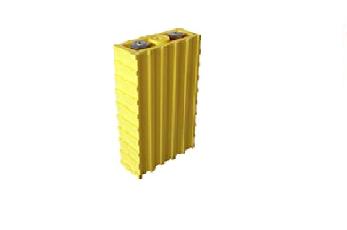 There are also several different Lithium-Ion chemistries. There's Lithium-Cobalt-Phosphate, which has a very high energy density and a nominal voltage of about 4.0V. These are what is in your laptop and your cell phone. There are also what is famous for catching fire. I didn't use these. My cells are Lithium-Iron-Phosphate (LiFePO4.) There are other possibilities, too. I chose the ones I did because they are famous for not catching fire. Their nominal voltage is a little lower, usually about 3.7V. This means that their capacity is also lower. I found this to be an acceptable tradeoff. Cell SizeYou can get Thundersky cells in lots of sizes. With a Sparrow, though, you're pretty much limited to the smallest size, 40Ah. Anything else is too tall to fit under the seat. (You need to keep them upright.) John Lussmeyer modified the pan under the battery compartment in his Sparrow to fit 90Ah cells, though I wonder whether he did structural damage when he did that. We'll never know because those cells failed and then his workshop burned down for other reasons. Thundersky company historyThundersky is famous in the American electric vehicle enthusiast crowd for having pawned off some really crappy cells on some people who paid all their spare cash for them, and then refused to make it right or refund the money. This happened over five years ago and today people seem to be getting what they pay for. Some people think that you shouldn't do business with them because they so blatantly cheated the early adopters. I decided that I was willing to reward them for turning out a good product now. Cell ConnectionsI wanted no more voltage than I had before, so that I didn't have to replace my motor controller and my DC/DC converter. So I limited my installation to 44 cells in series. In order to get enough range, I configured pairs of 40Ah cells so that the pack as a whole has 80Ah (nominal) of capacity. Manzanita Micro designed bus bars which connected them all together. They also built boxes which keep the cells from swelling and contracting as they charge and discharge and which keep the cells from bouncing around in an accident. Battery ManagementEach cell is monitored for voltage. Most cells have a temperature sensor either on the cell or near it. Each board monitors four cells. When the cell goes over a temperature-compensated maximum, then it turns on a shunt which bypasses the cell. I chose 3.85V as my maximum, based on cell tests done both by Manzanita Micro and others. I want my pack to last a long time. 3.85V is a compromise between maximum capacity and maximum cycle life. I set the minimum voltage to 2.7V per cell. When a cell drops below this threshold, I get a warning. Basically, it tells me to pick up my foot. I can drive very aggressively while the pack is at least half full. Below half full, I need to be more gentle if I want all the cells to remain in this low-damage zone. CostManzanita Micro, as I said above, gave me a big discount. They did this because I wrote the firmware in their BMS, free of charge. I did this because I wanted to learn about this stuff and tinker with my car. They sold me the cells at cost (about $5500) and the BMS, battery boxes and interconnections (about $6000) at a loss. They essentially donated their labor and they put in hundreds of hours on the job. I don't expect that they're willing to replicate this loss. Call them for a quote that represents a profit for them if you're interested. RangeMy pack is 80Ah nominal, when charged to 4.25V per cell and discharged to 2.5V per cell. A Sparrow goes about 1 mile per Ah. I only charge to 3.85V per cell and I set the BMS to warn me (as described above) when any cell drops below 2.7V. I'm currently experiencing a range of 45-50 miles on the highway before I can't go fast enough to suit me without getting too many low-cell warnings. Rich Rudman drove it 65 miles on rural roads without over-taxing it. Physical ModificationThe Sparrow is somewhere between 150 and 200 pounds (70-90kg) lighter than it was before. I notice that it's a little more twitchy on the highway. And the BMS eats up some usable space in the trunk. Layout and PlacementHere are some pictures, as it's easier to show you than to describe it. 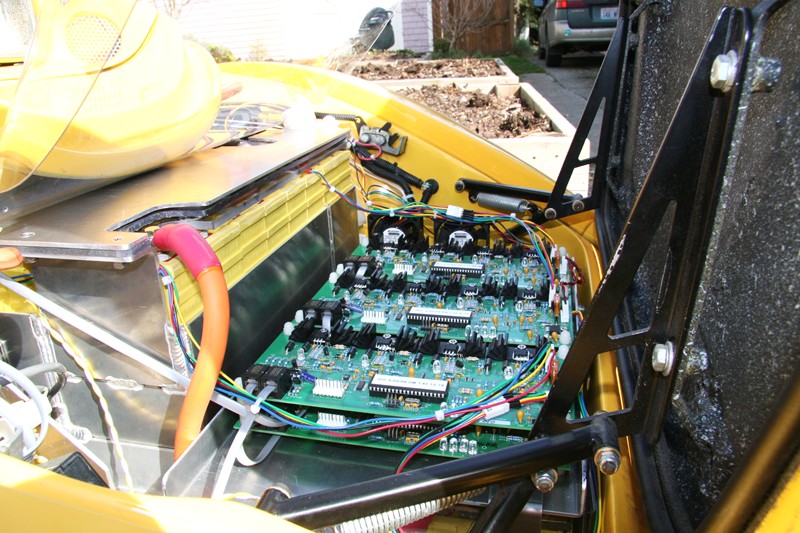  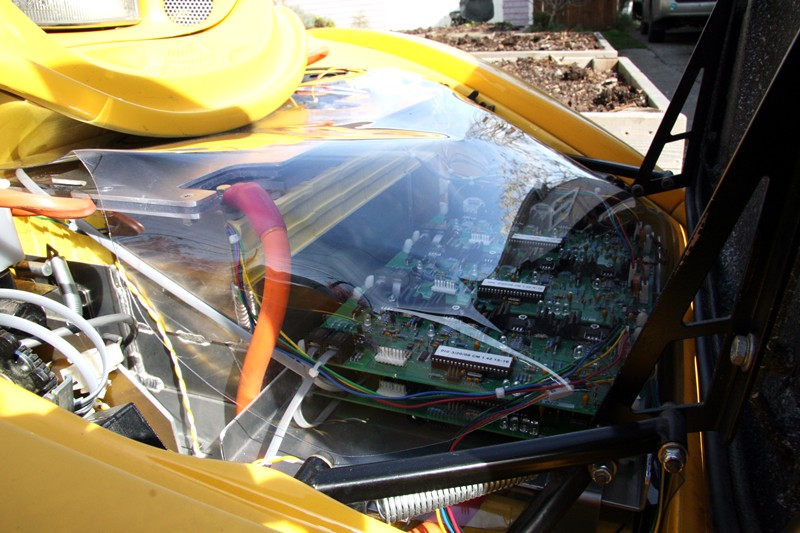 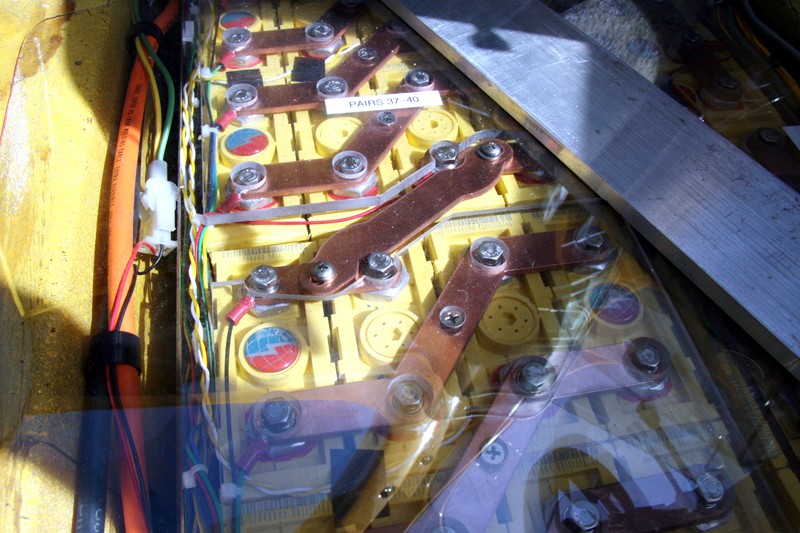 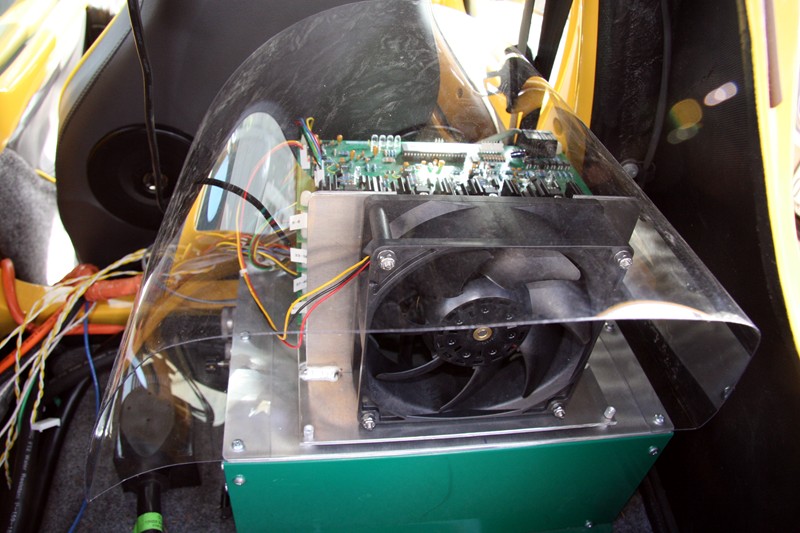 There are 44 cells (22S2P) under the seat: 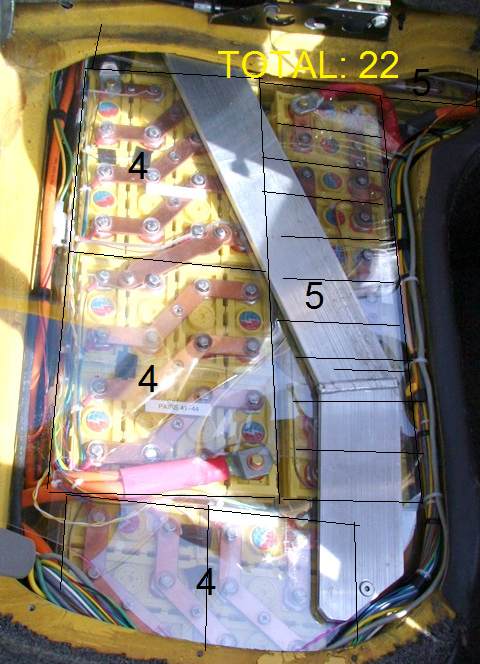 Therefore, there must be another 44 cells under the hood. |